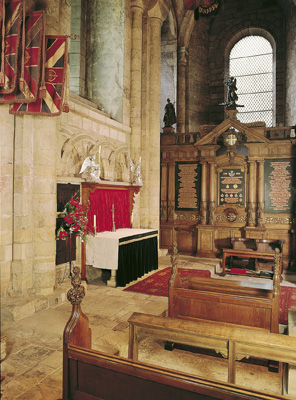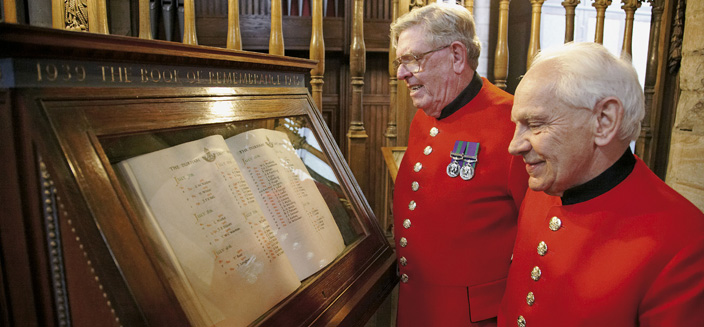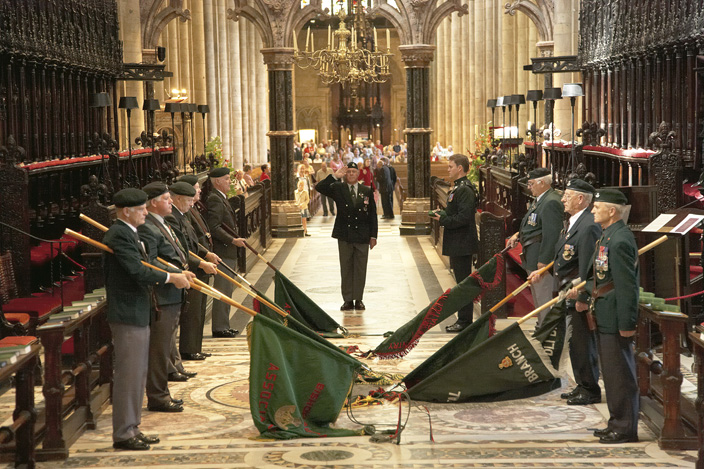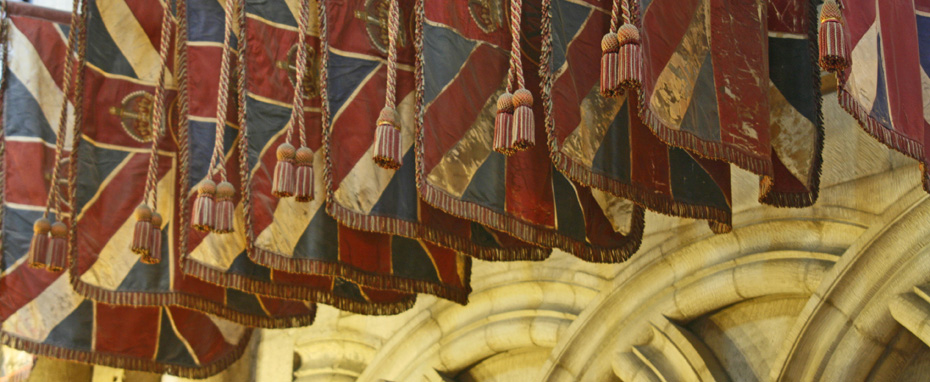
The DLI Chapel
© Durham Cathedral and Jarold
The Durham Light Infantry (DLI)
First established as the 68th regiment of foot soldiers in 1758, The Durham Light Infantry was formalised as such in 1881. It first saw action in Egypt and in South Africa during the Boer War.
The DLI played an important role in the First and Second World Wars, fighting in every major battle.
The regiment remained until 1968, at which point it was decided that it would join with two other county light infantry regiments to form the Light Infantry.
On December 12th 1968, the DLI paraded its flags inside Durham Cathedral for the last time.
Read about the History of the Durham Light Infantry on the DLI Museum website.
This text is abbreviated from A Short Guide to the Durham Light Infantry Chapel And Other Memorials in Durham Cathedral, on sale in the Cathedral.
Why is the DLI Chapel in the Cathedral?
The death toll on the Durham Light Infantry was very heavy in the First World War. With more than 12,600 dead and thousands wounded, the regiment was an extremely important part of County Durham life, and there was hardly a family that had not been affected by the war.
All over the country, memorials were being erected to honour those who had given their lives for the cause of peace.
As such, in 1922, the regiment’s officers and the Cathedral Chapter decided to create a memorial chapel in the Cathedral, in what had formerly been two pre-reformation chapels.
The Creation of the DLI Chapel
The chapel was designed by a prominent church architect W.D. Caroe. It was financed by the regiment, the Dean and Chapter of Durham Cathedral, public subscription, and the Prisoners of War Parcels Fund.
It was dedicated by the then Bishop of Durham, Hensley Henson, on October 20th, 1923.

The DLI Books of Remembrance are on display inside the chapel.
© Durham Cathedral and Jarold
The Books of Remembrance
These two books, on permanent display in the DLI Chapel, commemorate those that died in the two World Wars, (over 12,600 in the first and 3,000 in the second).
The pages are turned daily, as the books are in date order with the casualties recorded on the date that they died.
In the WWI book especially, the same surnames appear time and again – neighbours, friends, and relatives were encouraged to join up to form ‘pals battalions’.
There is also a Small Campaigns Book of Remembrance, listing those who fell in Korea, Borneo, Cyprus, and Northern Ireland between October 1952 and September 1973.
Revising History
Names continue to be added to the Books of Remembrance, as research into family histories reveals omissions.
Access to the Books of Remembrance
Cathedral Vergers can help visitors look at a specific page in the Books of Remembrance. The Vergers' Vestry can be found adjacent to the DLI Chapel.
More information can be obtained by writing to:
The Secretary, The Light Infantry Office, Elvet Waterside, Durham, DH1 1BW,
Telephone: +44 (0)191 386 5496.

A DLI Colours Service in the Cathedral Quire.
© Durham Cathedral and Jarold Printing
Medieval Remains in the DLI Chapel
Two significant medieval elements of Durham Cathedral are to be found in the DLI Chapel: what are probably the last two wooden seats remaining from the building’s medieval quire, and a window above the altar depicting St Cuthbert, probably the oldest surviving example of stained glass in the building.

